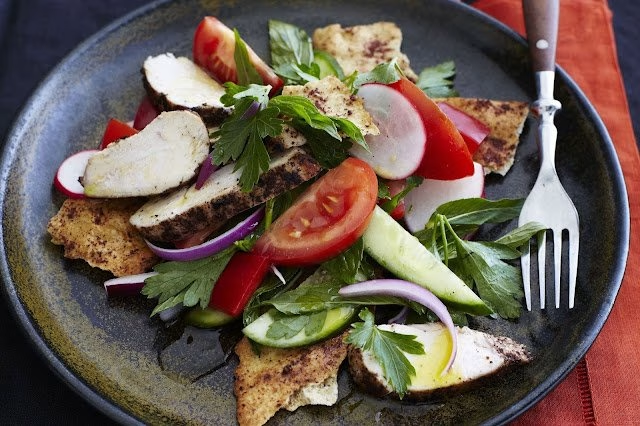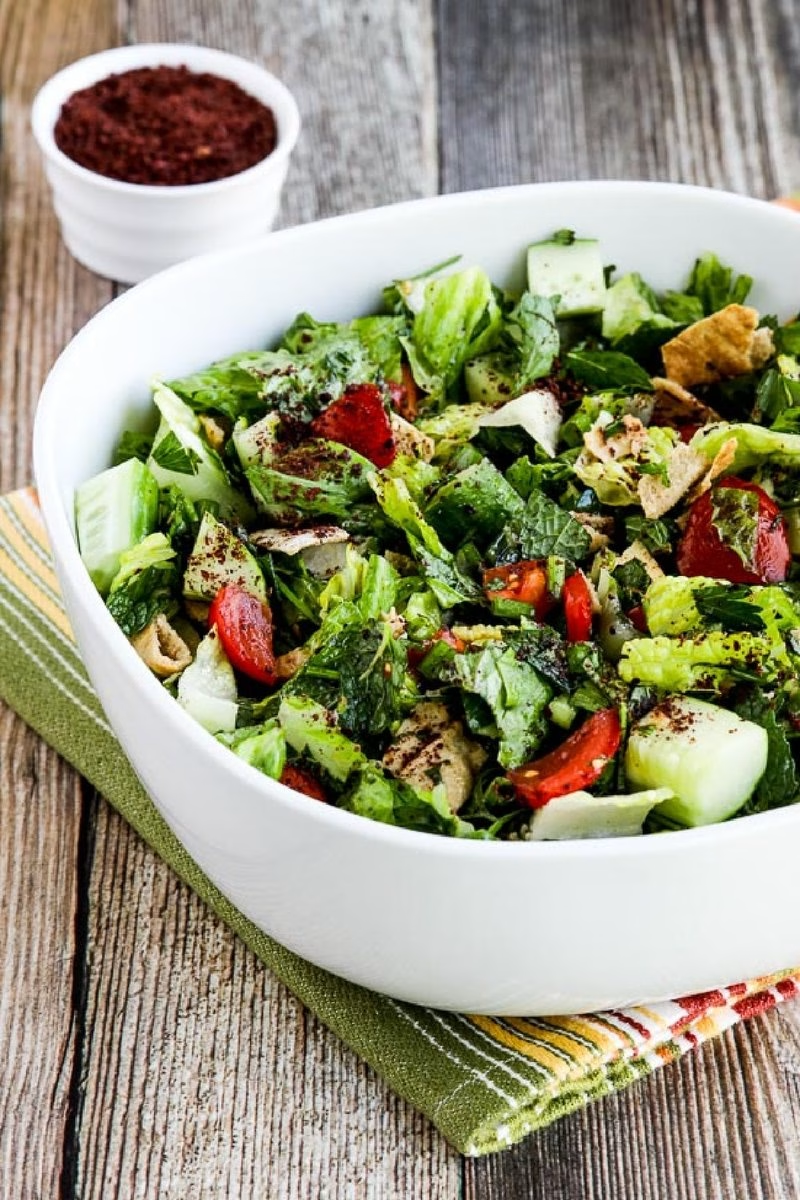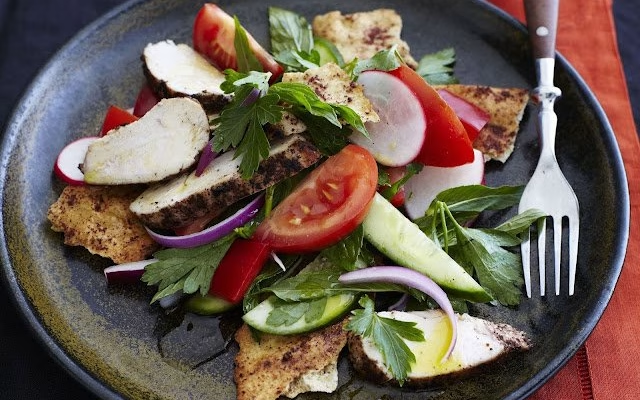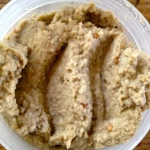
Introduction
Imagine a salad that dances with flavors, a vibrant mix of fresh vegetables, and a delightful tang that awakens your taste buds. That’s exactly what you get with **Fattoush With Sumac**, a traditional Lebanese salad that’s as colorful as it is delicious. Originating from the Levant region, this dish has been cherished for generations, often served as a refreshing side during meals or as a light lunch. The star of Fattoush is, without a doubt, the **sumac**, a tangy spice that adds a unique contrast to the crisp vegetables. In this article, you’ll learn how to make Fattoush With Sumac at home, explore its key ingredients, variations, and receive some handy tips to elevate your dish. Let’s dive into the world of Fattoush!
Ingredients
To whip up an authentic and flavorful Fattoush With Sumac, gather the following ingredients:
| Ingredient | Measurement | Description |
|---|---|---|
| Tomatoes | 2 medium-sized | Fresh *tomatoes* add juiciness and sweetness to the salad. |
| Cucumber | 1 large | *Cucumbers* bring a refreshing crunch that enhances the overall texture. |
| Radishes | 4-5 small | *Radishes* provide sharpness and an extra crunch that complements the salad beautifully. |
| Bell Pepper | 1 (any color) | A *bell pepper* adds sweetness and color diversity to the dish. |
| Parsley | 1 cup, chopped | *Parsley* not only brings in freshness but also gives a lovely aromatic touch. |
| Mint Leaves | 1/2 cup, chopped | *Mint leaves* add a cool, vibrant flavor, making every bite delightful. |
| Pita Bread | 2 pieces | Toasted *pita bread* provides a delightful crunch, a key component in traditional Fattoush. |
| Sumac | 2 tablespoons | *Sumac* brings a zesty, tangy flavor that’s essential for an authentic Fattoush. |
| Olive Oil | 3 tablespoons | *Olive oil* is a classic base for the dressing, enriching the salad’s flavors. |
| Lemon Juice | 2 tablespoons | *Lemon juice* adds brightness and acidity, perfect for balancing the flavors. |
| Salt and Pepper | to taste | *Salt and pepper* enhance all the vibrant flavors in the salad. |
Step-by-Step Instructions
Let’s craft your Fattoush With Sumac step by step, ensuring it’s both delicious and visually appealing.
- Prepare the Vegetables: Begin by washing all your fresh vegetables thoroughly. Dice the *tomatoes*, slice the *cucumber*, chop the *bell pepper*, and finely slice the *radishes*. Ensure everything is cut into bite-sized pieces for easy eating.
- Chop the Herbs: Next, take your *parsley* and *mint leaves*. Roughly chop them, keeping their freshness intact. These herbs are crucial for adding a vibrant, herby flavor to the Fattoush With Sumac.
- Toast the Pita Bread: While your vegetables and herbs are prepped, take the *pita bread* and cut it into triangles. Toast them in a dry skillet over medium heat until they are golden brown and crispy. Set aside to cool.
- Make the Dressing: In a small bowl, whisk together the *olive oil*, *lemon juice*, *sumac*, and a pinch of *salt and pepper*. This dressing is vital for pulling together all the flavors in your Fattoush With Sumac.
- Assemble the Salad: In a large mixing bowl, combine all your prepared vegetables and herbs. Drizzle the dressing on top, mixing gently to ensure everything is evenly coated.
- Add the Pita: Just before serving, toss in the toasted *pita bread*. This keeps the pita crunchy and adds texture to your Fattoush.
- Serve: Transfer your beautifully colorful Fattoush With Sumac to a serving dish. Garnish with an extra sprinkle of *sumac* and enjoy this refreshing salad!
Pro Tips
Here are some pro tips to elevate your **homemade Fattoush With Sumac** experience:
- Use Fresh Ingredients: The fresher your vegetables and herbs, the better your salad will taste. Try to use organic produce whenever possible.
- Experiment with Add-ins: For a unique twist, consider adding ingredients like grilled chicken, chickpeas, or avocado. These variations not only enhance flavor but also make it more filling.
- Make it Ahead: This salad can be prepared a few hours in advance, just keep the *pita bread* separate until serving to maintain its crunch.
- Adjust the Sumac: Feel free to adjust the amount of *sumac* in your dressing to suit your taste. Some like it tangier!
- Chill Before Serving: If time allows, let your salad sit in the refrigerator for about 30 minutes before serving. This allows the flavors to meld beautifully.
Nutritional Information
Here’s what you can expect in terms of nutrition for one serving of Fattoush With Sumac:
| Nutrient | Amount |
|---|---|
| Calories | 180 |
| Protein | 3g |
| Carbohydrates | 24g |
| Saturated Fat | 1g |
| Fiber | 5g |
| Cholesterol | 0mg |
| Sugars | 2g |
| Fat | 8g |
FAQs
Here are some frequently asked questions about Fattoush With Sumac:
What is the best way to store Fattoush With Sumac?
Store the Fattoush in an airtight container in the refrigerator. It’s best enjoyed fresh, but it can last for up to 2 days if stored properly.
Can Fattoush With Sumac be made vegan or gluten-free?
Absolutely! Fattoush is naturally vegan. For a gluten-free option, simply use gluten-free pita bread or skip the bread entirely.
What are the best side dishes to serve with Fattoush With Sumac?
Fattoush pairs well with grilled meats, falafel, or even as a side to hummus and tabbouleh for a complete Middle Eastern feast.
How long does it take to prepare Fattoush With Sumac?
Preparation takes about 15 minutes, making this a quick and delicious option for lunch or a side dish.
Can I freeze Fattoush With Sumac for later?
It’s not ideal to freeze Fattoush, as the vegetables can become mushy. It’s best served fresh.
Is sumac available in grocery stores?
Yes, most grocery stores carry *sumac* in the spice aisle. If you can’t find it, check out Middle Eastern or specialty stores.
How do I make a low-calorie version of Fattoush With Sumac?
To reduce calories, you can cut down on the olive oil and use more vegetables, like leafy greens, to bulk it up.
Can I add fruits to Fattoush With Sumac?
Yes! Some people enjoy adding fruits like pomegranate seeds or diced apples for a sweet twist that complements the tangy flavors.






